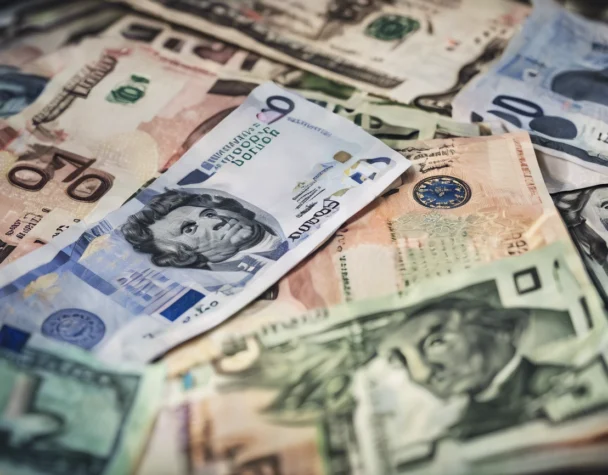
Dollar Weakness and Euro Strength Define May 2025 Forex Trends
Fri, May 09, 2025The foreign exchange (forex) market in May 2025 is delivering sharp moves as traders react to shifting global dynamics, from U.S. fiscal concerns to central bank policy pivots and geopolitical tensions. Here’s an overview of the key developments driving major currency pairs this month.
U.S. Dollar Retreats While Euro Gains Momentum
The U.S. dollar, measured by the Dollar Index (DXY), has weakened nearly 9% year-to-date, reflecting broad investor concerns over U.S. trade policy and the Federal Reserve’s independence. President Trump’s aggressive tariff moves and fiscal uncertainties are eroding confidence in the dollar as a traditional safe-haven currency. A recent Reuters poll reveals that over 55% of foreign exchange strategists now question the dollar’s reliability — a sharp increase from April’s 33%. This bearish sentiment has opened the door for other major currencies to shine.
On the European front, the euro has surged approximately 10% over the past two months. The European Union’s €500 billion defense spending initiative and upbeat manufacturing data have bolstered capital inflows, strengthening the euro further. Analysts predict the EUR/USD pair will likely consolidate within the 1.1200 to 1.1575 range this month. For deeper insights on the euro outlook, visit XE’s May 2025 currency report.
Pound, Yen, and Loonie Adjust to Policy Shifts
The British pound, while recently hitting a multi-month high of 1.3424 against the dollar, faces pressure from weaker economic data. The Bank of England’s fourth consecutive rate cut, bringing rates to 4.25%, underscores efforts to offset the impact of global trade tensions. This move reflects the central bank’s cautious approach in the face of deteriorating PMI readings across manufacturing and services.
Meanwhile, the Japanese yen has attracted safe-haven flows amid global volatility. However, the Bank of Japan’s decision to keep rates steady and lower its growth and inflation outlook has modestly weakened the yen, pushing USD/JPY to trade near 143.20. The Canadian dollar has quietly outperformed expectations, rising 5.4% against the U.S. dollar over the past three months. Despite sluggish economic growth and ongoing U.S.-Canada trade negotiations, reduced short positions and investor optimism around the USMCA deal have helped boost the loonie.
Emerging Market Currencies React to Geopolitics
In Asia, local currencies are rallying sharply, led by the Taiwan dollar. The appreciation trend is driven by companies repatriating funds from U.S. assets as concerns over U.S. tariffs grow. This has improved regional purchasing power but created export competitiveness risks, increasing demand for hedging services.
The Chinese yuan remains relatively stable, thanks to the People’s Bank of China’s managed policies, though additional monetary easing is likely in the pipeline. Meanwhile, the Indian rupee, which suffered its sharpest one-day loss in a month following India’s missile strikes on Pakistan, is now recovering. Foreign investor flows into Indian equities suggest confidence that the geopolitical tensions will not escalate significantly. For an in-depth look at this development, check Reuters’ India-Pakistan rupee update.

